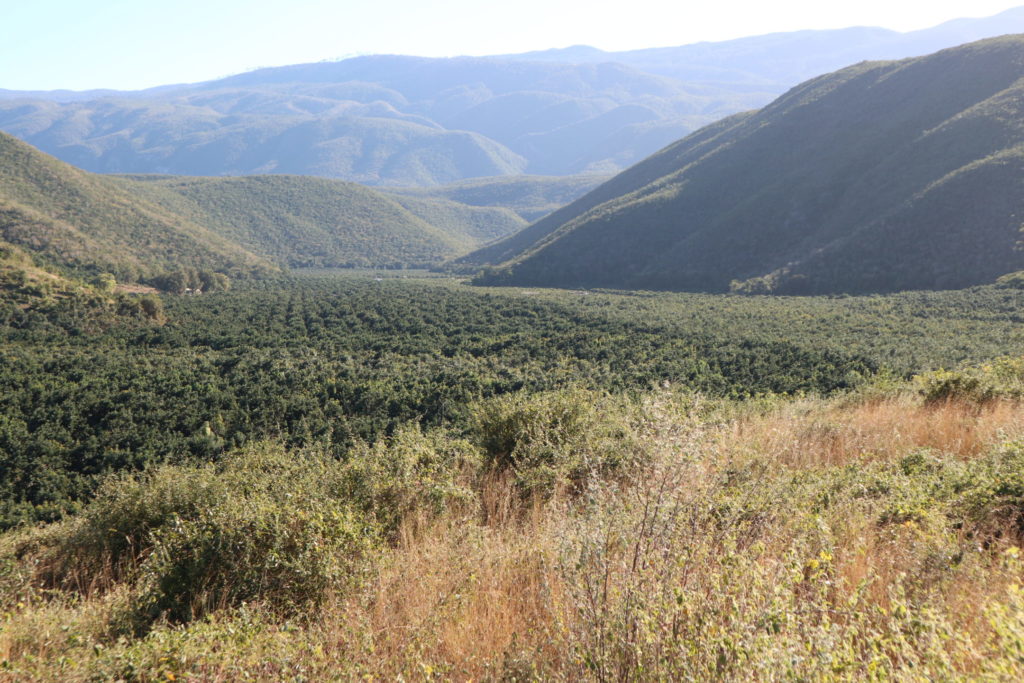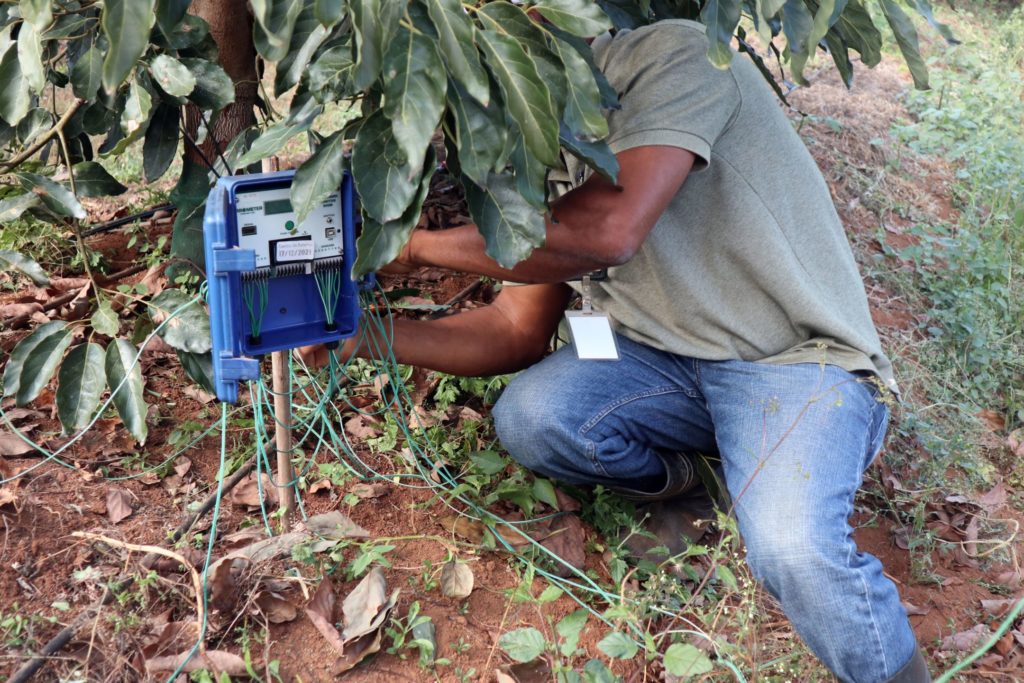Although small in size, the Dominican Republic (DR) has an abundance of avocado orchards, with nearly 55,000 acres of avocado trees mostly targeted for export to the United States and Europe.

According to the Dominican Ministry of Agriculture, the country produces 634,000 tons of avocados every year, ranking the country among the top 5 largest producers in the world, behind Mexico, Peru, Colombia, and Indonesia. The United States is the main market for the Dominican avocado, with $37.5 million worth of avocados exported in 2021 (approximately 48% of the total exported).
Nonetheless, the large market cap of the avocado industry has created its own challenges for the Dominican people. Since 2019, multiple reports have cast light on the increasing presence of avocado production within natural reservation areas. These small developments are commonly planted and managed by low-income farmers with little to no access to farming land.
One of the primary public concerns is the detrimental effects that deforestation and the establishment of fruit crops could have on aquifers and water sources. While major farming companies have access to technical knowledge and technologies that allow them to manage plantations efficiently, small and medium farmers have limited access to or awareness of such resources.
Even a basic knowledge of crop irrigation requirements has many benefits, such as the improvement of water use efficiency (liters of water consumed per kg of avocado produced), the optimization of fertilizer usage by decreasing potential leaching and assuring enough moisture for the fertilizer to be available, and the promotion of a sustainable balance between avocado farming and environmental conservation. Although it requires adjustments for each individual farmer, the ability to estimate average crop water consumption is a first step toward a deeper understanding of actual water usage and the improvement of water use policies of the country.
Soil moisture sensors are a useful tool that can be used to estimate plant water needs based on measurements of soil water content and complement knowledge of irrigation requirements. However, this technology can be too expensive for smallholder farmers and, even then, may not provide complete information if the sensors can only estimate the volume of water near the area where they are installed. Variations in soil properties, crop species and stage of growth, and atmospheric conditions will also influence plant water use.
In 2019, the Ministry of Higher Education, Science, and Technology of the Dominican Republic, in collaboration with the Specialized Institute of Higher Studies Loyola and faculty from Virginia Tech, embarked on a multi-year project with the objective of both identifying water requirements for avocados and finding potential applications of remote sensing technologies for estimation of spatial and temporal variations in water needs.
The project, “Determination of crop evapotranspiration through the integration of energy balance data for the optimization of avocado irrigation in the Dominican Republic,” was first established in an organic avocado farm in the southwest region of the country. Data was collected from 2.5-year-old ‘Hass’ avocado trees, where researchers established four irrigation treatments based on the current commercial irrigation practices of the DR. Treatments consisted of 100 percent of the normal irrigation regimen, 125 percent of the irrigation regimen as a representation of an over-irrigated crop, and 75 percent and 50 percent to represent a sub-irrigated crop. The hypothesis was that if plants were over-irrigated, plant performance would not be affected with less irrigation applied. Researchers established the four treatments in a Randomized Complete Block Design with four replications in a 1.5-acre study area within the farm.

The water balance of the soil was measured using soil moisture sensors established in two directions – one in the same direction as the planting bed and the other in the direction towards the adjacent planting bed. Sensors were established at three different depths and distances from the trunk of the tree. In each of the directions, sensors were established 20 inches from the trunk at 12 inches of depth, 40 inches from the trunk at 24 inches of depth, and 60 inches from the trunk at 48 inches of depth, respectively. Additionally, two sensors were established at 60 inches from the tree at 12 inches. There were 16 sensors per tree.
To assess plant performance, researchers measured the number of leaves per unit area, known as the Leaf Area Index, as an estimation of plant biomass. This index measures the spread of leaves over a certain area of land (measured in square meters per square meter). For example, one unit of this index is equivalent to the leaf area of 10,000 square meters in a hectare.
Additionally, the researchers captured aerial photos of the crops using a drone flying 100 feet in the air. These photos were captured with a special camera that can recognize wavelengths of light beyond what a human can see. This technique can gather unique information, such as the measurement of plant health via plant reflectance of infrared and near-infrared light.
From the images, researchers calculated multiple Vegetation Indexes to estimate plant performance. A Vegetation Index is calculated by converting data from different color bands in a picture. This assessment makes green plant life stand out, distinguishing it from other aspects of the picture. Converting data in this way can help determine how much plant cover there is, how healthy the plants are, and how big the plant leaves are.
After the analysis of the collected information, researchers identified five key findings:
A single three-year-old avocado tree in the southeast of the DR requires an average of 41 L/day of water.
This number represents water needed for transpiration and water that will be retained and later lost by the soil around the tree (evaporation). This estimation is in accordance with measurements from Lahav and Whiley in 2002. which stated that three-year-old avocado trees needed 30 to 50 liters per day in Mediterranean climates.
Avocado farmers in the DR are over-irrigating.
Data showed no significant difference in Leaf Area Index and multiple Vegetation Indexes among the irrigation treatments. This shows that the avocado trees studied performed equally well with only half the current average water application. Therefore, avocado farmers are using on average 2,377 gallons per hectare more water than necessary for their plants. These findings are an initial effort to measure water use efficiency for Dominican avocados that could be replicated in other locations of the country.
Vegetation Indexes, which are used to assess various aspects of plant health, growth, and environmental conditions by analyzing the reflectance of light from plant canopies, are excellent tools for estimating plant performance and water status.
These indexes offer valuable insights for a wide range of applications in agriculture, forestry, ecology, and environmental monitoring. Moreover, Vegetation Indexes are commonly employed to estimate plant water status. One frequently used index for this purpose is the Normalized Difference Vegetation Index (NDVI), which compares the reflectance of near-infrared and red light. NDVI is often utilized to evaluate overall plant health, including the presence of water stress. In simpler terms, NDVI values typically range from -1.0 to 1.0. Negative values often indicate the presence of clouds or water, while values close to zero and positive suggest bare soil. Higher positive NDVI values can reflect varying levels of plant growth, ranging from a bit of greenery (0.1 – 0.5) to abundant, healthy vegetation (0.6 and higher). Vegetation Indexes hold significant value for farmers because they provide precise and timely insights into the health and condition of their crops.
There is still research needed to develop a useful water management program for the country.
For example, the recommendations developed for avocado production from this project are only applicable to soils of clay textures, such as the one at the study site. Additionally, the information is only relevant for trees similar in age to the ones used for the study. Ultimately, the outcomes from this project, which originated from the efforts of multiple national and international institutions, demonstrate the importance of agricultural research and collaboration between organizations to create sustainable solutions to conservation challenges across the globe.
Research into the water usage of specific crops can have a significant influence on policy decisions related to water management, agricultural practices, and environmental sustainability.
Research that accurately quantifies crop water requirements can provide policymakers with essential information for designing water allocation policies. These policies may prioritize water distribution to crops based on their water efficiency and economic value. Crops that are found to be water-intensive might face stricter regulations or incentives to encourage more efficient irrigation practices. Similarly, understanding the crop’s water needs can lead to the development of irrigation regulations that align with sustainable water usage. For instance, policymakers might mandate the use of more water-efficient irrigation techniques, such as drip irrigation, application of remote sensing, or low-cost soil moisture sensors for monitoring in areas where water resources are scarce. Research findings could also lead to the establishment of incentive programs aimed at encouraging farmers to adopt practices that promote water and fertilizer efficiency. These incentives could include financial support for purchasing modern irrigation equipment, conducting soil moisture monitoring and soil nutrient analysis, or adopting advanced farming technologies.

